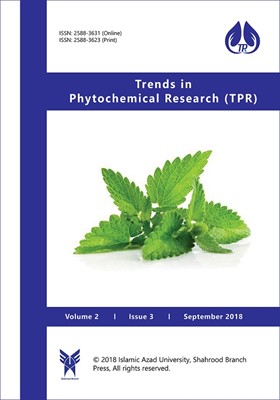-
-
List of Articles
-
Open Access Article
1 - Evidence-based phytotherapy: what, why and how?
Satyajit d. Sarker Lutfun Nahar -
Open Access Article
2 - Study of the antileukemic activity of Mimosa caesalpiniifolia Benth. ethanolic extract and fractions
Gabriele Taumaturgo Mororó José Roberto de Oliveira Ferreira Michel Mualén de Morais Alves Nayana Bruna Nery Monção Laís Campos Teixeira de Carvalho-Gonçalves Antônia Maria das Graças Lopes Citó Paulo Michel Pinheiro Ferreira Fernando Aécio de Amorim Carvalho Juan Carlos Ramos Gonçalves -
Open Access Article
3 - Isolation, characterization and biological activities of phytoconstituents from Lonchocarpus eriocalyx Harms leaves
Lawrence Onyango Arot Manguro Phillip Okind Owuor Angeline Atieno Ochung -
Open Access Article
4 - Intra-specific differentiation, genetic variability and their prospect for exploitation in medicinally important plant Black henbane (Hyoscyamus niger L.)
Renu Yadav Raj Kishori Lal Ved Ram Singh -
Open Access Article
5 - Secondary metabolites of Hypericum richeri Vill. collected in Central Italy: chemotaxonomy and ethnomedicinal relevance
Alessandro Venditti Armandodoriano Bianco -
Open Access Article
6 - Effect of solvent, time and method of extraction on the amounts of phenolic, flavonoid and the antioxidant activity of the extract of Ixiolirion tataricum (Pall.) Schult. & Schult.f.
Fatemeh Rabbani Malihe Samadi Kazemi -
Open Access Article
7 - Volatile oil composition, antioxidant and antimicrobial properties of Boerhavia erecta L. and Euphorbia hirta L.
Omosalewa Olaoluwa Dorcas Moronkola Olayombo Taiwo Peremobowei Iganboh -
Open Access Article
8 - The rhizome essential oil of Curcuma aeruginosa Roxb. (Zingiberaceae) from Vietnam
Pham T. Oanh Nguyen T. Thanh Do T. Xuyen Le T. Huong Opeyemi N. Avoseh Isiaka A. Ogunwande
-
The rights to this website are owned by the Raimag Press Management System.
Copyright © 2021-2025







